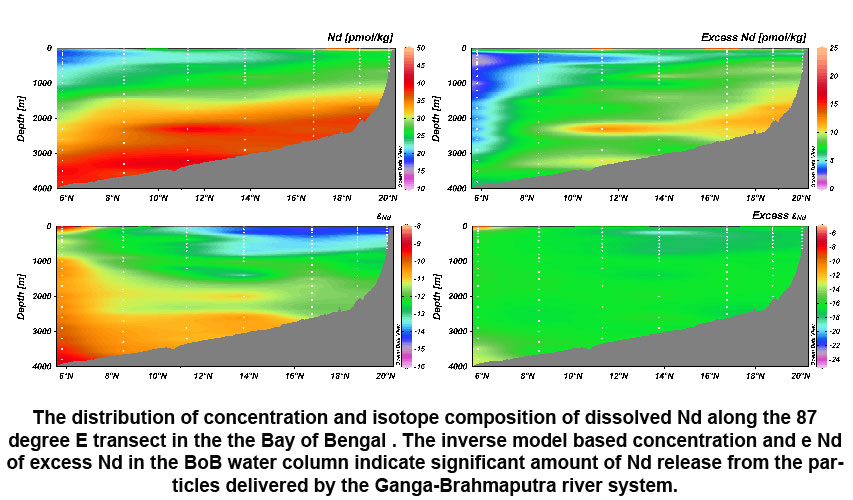Significant role of dissolved/particulate neodymium from the Ganga–Brahmaputra river system and Bay of Bengale margin in contributing to the dissolved Nd budget of the global oceans.
Data on dissolved Nd concentrations and isotopic compositions measured along a 87 E transect (GI01 section, “Indian GEOTRACES”) have been used in an inverse model in order to identify the respective effects of water mass mixing and Nd release from particulate matter in balancing this tracer budget in the Bay of Bengal. Results clearly underline that release from particulate phases supplied by the Ganga–Brahmaputra river system is required to explain both the distribution and budget of the Nd parameters. Calculations also evidence that supply of Nd from continental margin sediments is occurring at places identified at places identified as “hotspots of Nd release”.
Click on the image to view it larger.
Reference:
Satinder Pal Singh, Sunil Kumar Singh, Vineet Goswami, Ravi Bhushan, Vinai Kumar Rai (2012), Spatial distribution of dissolved neodymium and εNd in the Bay of Bengal: Role of particulate matter and mixing of water masses: Geochimica et Cosmochimica Acta, ELSEVIER (94) p. 38-56, DOI : 10.1016/j.gca.2012.07.017.

